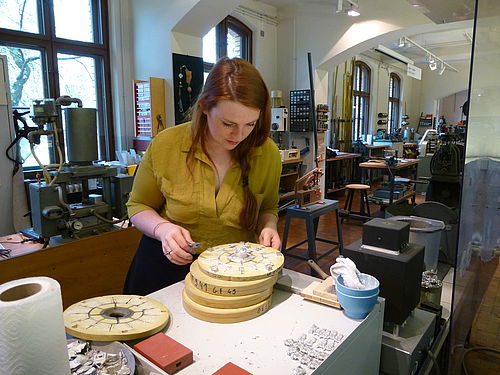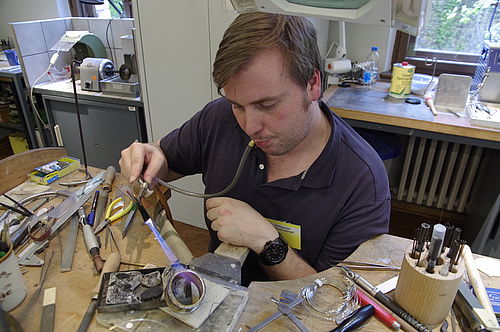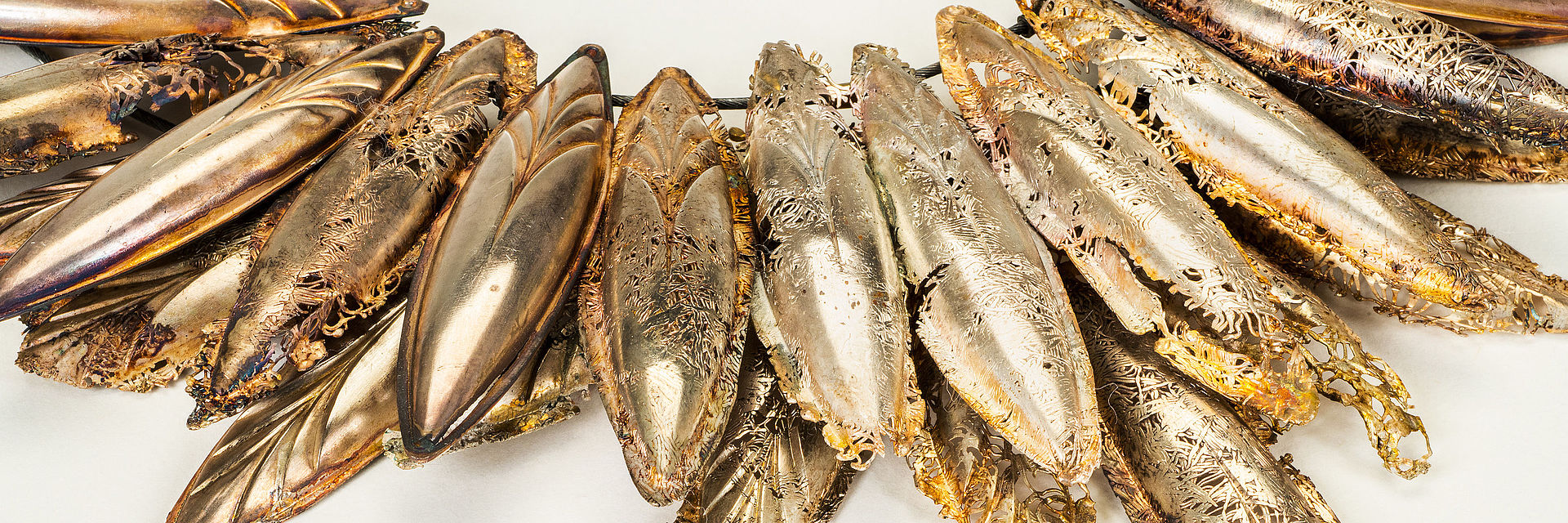Artists in Residence

The scholarship is intended for graduates of the jewelry course at Pforzheim University. Every year an international jury selects one or two scholarship recipients from the list of applicants who then have the opportunity to work for three to six months in the museum’s jewelry workshop. The Artist-in-Residence grant is a joint project of the Stiftung Deutsches Technikmuseum Berlin and the C. Hafner Gold and Silver Refinery. Together they seek to preserve the knowledge and skills of the endangered artisanal manufacturing techniques for jewelry and support young jewelry designers in their creative work.
The scholarship is part of the “Manufactory Jewelry Design” project, which was given the “Best Practice” designation in 2015 by the German UNESCO Commission. The project is an example of how museums can not only preserve tangible objects, but intangible cultural heritage as well. The project gives young designers access to machines and tools that are rarely seen outside of a museum – and especially not ones that are operative. They will be taught how to use the machines by the jewelry production staff and can then work independently on their designs.

Visitors to the Deutsches Technikmuseum have the opportunity to see the historical machines in action in the jewelry workshop. Both the scholarship holders and the tour guides demonstrating the machines are happy to provide insight into jewelry production. The fact that the historical machines and tools are not used to artificially reproduce a previous production but rather harnessed to develop new modern designs is what makes this exhibit distinctive. The museum workshop and its exhibits are thus brought back to life. Research, experimentation and considerable creativity stand at the center of the workshop’s activities. The resulting products range from art objects to serially produced jewelry pieces.
You can find out more about the scholarship on the blog (in German) kept by the scholarship holders during their stay at the Deutsches Technikmuseum. They use the blog to document their overall impressions as well as their production steps.
Satoshi Nakamura bases the design of his brooches on the skylines of large cities. He thereby uses a combination of modern techniques, such as rapid prototyping to create the brooch setting, and traditional techniques, such as guilloché engraving for making the unique patterns.
SDTB / C. Kirchner
Stephanie Hensle creates the fox’s fur in her brass fox stole by connecting hundreds of old earring parts. Thus each object from a serial production becomes one of a kind.
SDTB / C. Kirchner
Are your books also filled with “blah-blah-blah”? Eva Knoch uses books and magazines as a mold for her jewelry and literally burns her message into the pages.
SDTB / C. Kirchner
A 3D printer creates an object layer by layer. Liu Xin’s special soldering technique imitates this procedure in small-scale manual work and creates fascinating pieces of jewelry, the different layers of which are meant to reflect our society.
SDTB / C. Kirchner
A foreign substance in a ring was considered a grave mistake in artisanal jewelry production. The piece would end up in the scrap pile. Fabian Jäger produces this “mistake” on purpose and uses it strategically as a design element.
SDTB / C. Kirchner
Innumerable people have allotted “Likes” on Facebook, etc., but how does it feel to deliver a Like personally. Rebecca Schultze’s chain has a limited number of Likes. The red adhesive film can be peeled off and given away. We love it!
SDTB / C. Kirchner

10 Year Anniversary
The scholarship will celebrate its tenth anniversary in 2021. The festivities included an exhibition put on by the Deutsches Technikmuseum in cooperation with the Noon Gallery in Berlin. Interested parties were cordially invited to take a look at ten years worth of work that the scholarship has produced. Many of the artists were at the opening in person.
Selected pieces will be presented in the gallery until Christmas.

